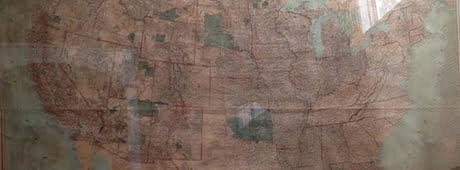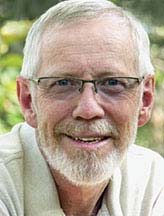No products in the cart.
Presto—Spotlight City

It’s Not Preston
By Rick Just
Photos courtesy of Rick Just
An argument can be made that Presto doesn’t qualify for IDAHO magazine’s Spotlight City feature, because it was never a town. Yet over the more than two decades that we’ve brought accounts of communities throughout the state to our readers, we’ve sometimes stretched the definition a bit. For example, the place doesn’t have to have been incorporated, and it can be a ghost town now. But we do look for a post office at one time in the community and Presto had one. That’s good enough for us.
There was great reverence on a day in 2014 when my brother Kent and my cousins Wallace, Wendy, Marlene, Charlotte, and Ginger joined me in taking the 1887 US map off the wall in the hallway of the “big house.” It had hung there for 127 years, ever since family patriarch Nels Just tacked it up with four narrow trim pieces.
Two years before he hung the map, Nels Anderson Just had become a citizen of the United States, although he had lived in the country since arriving in Utah in 1857. He had called this place along the Blackfoot River home since 1870.
I can picture him, tacks in his teeth, tapping those mini-nails into the wood and through the fabric of the map while stepson Fred and his teenage sons James and George held it to the wall. I can almost hear him cursing when he discovered he had cut the side pieces about an inch too short. We discovered Nels’s measuring error when we got the map down and laid it out on the long kitchen table. Not wishing to waste half a day riding into town and back to get more wood trim, he just cut off the bottom of the map with a knife—and none too expertly.
That map had always been the centerpiece of the home, built the year the map was printed in 1887. It was a talking point for visitors who pointed out where they were from and where they had been. Many neighbors came, starting in 1890 when Idaho became a state, and Presto became a place.
This content is available for purchase. Please select from available options.
Register & Purchase Purchase Only
Register & Purchase Purchase Only

